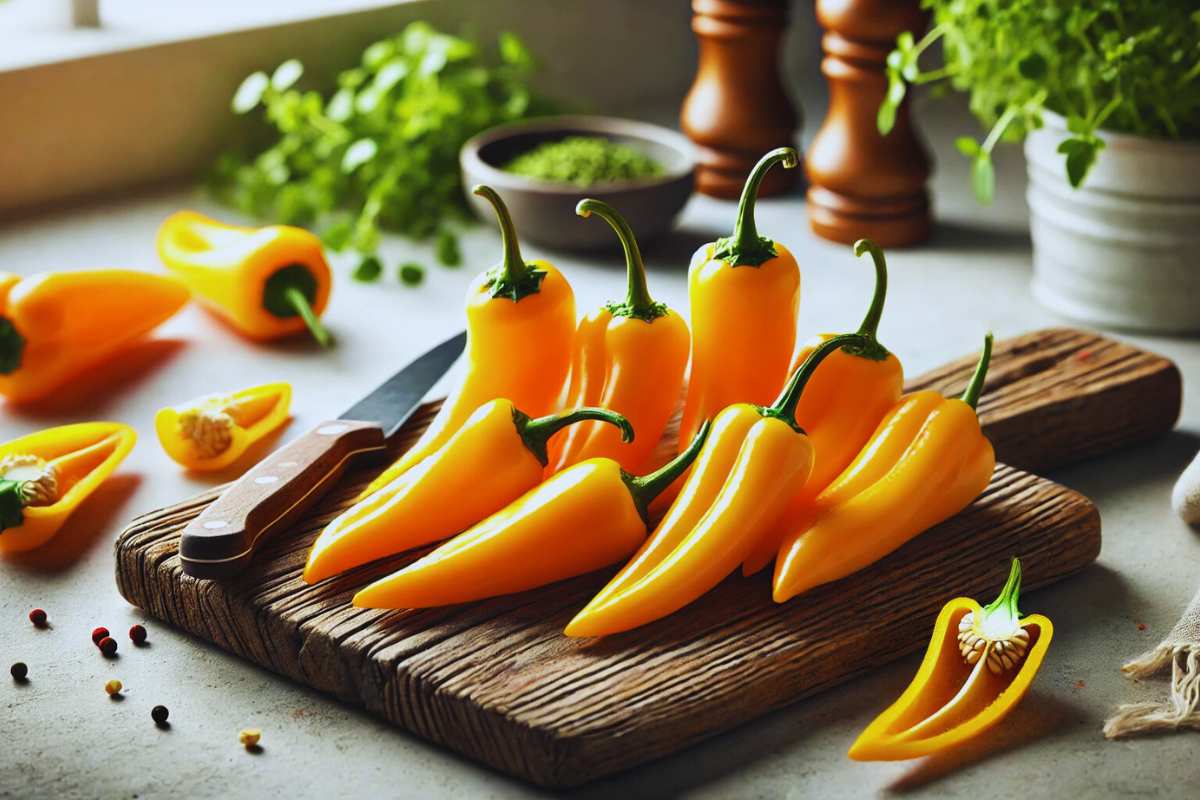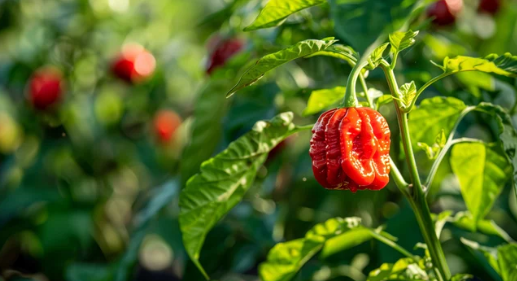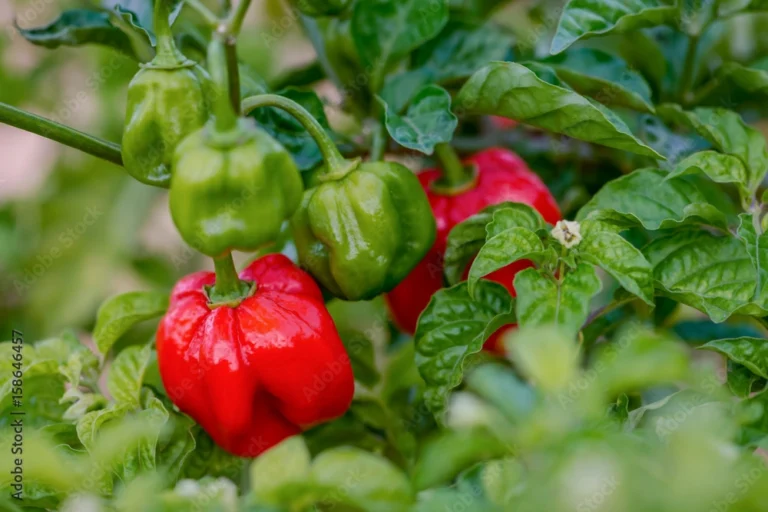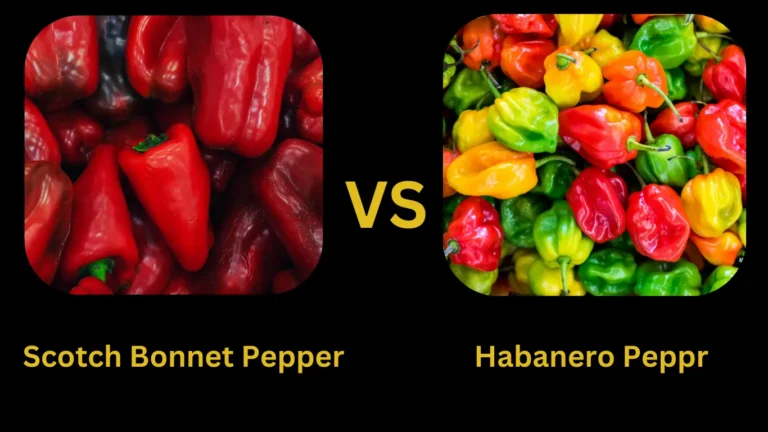Aji Amarillo: The perfect blend of heat and Flavor
What is it Aji Amarillo Pepper ?
The Aji Amarillo, a vibrant yellow chili pepper hailing from Peru, is far more than just a spicy ingredient. It’s a cornerstone of Peruvian cuisine, offering a unique flavor profile that’s both complex and exhilarating. Let’s delve deeper into this captivating pepper.
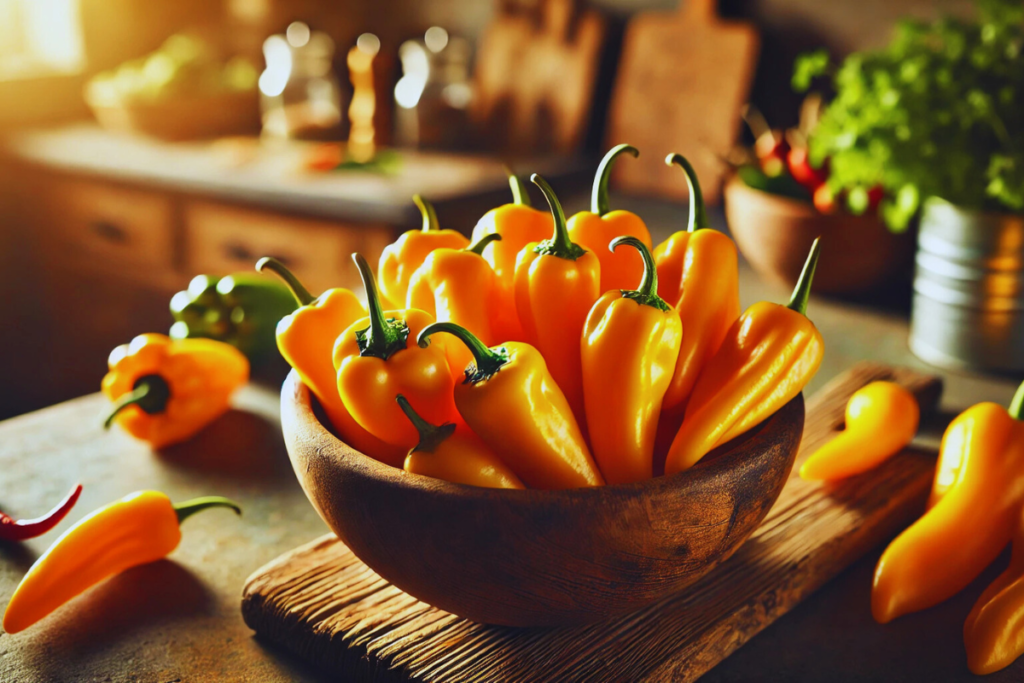
Appearance and Origin
Aji Amarillo, meaning “yellow chili” in Spanish, is a member of the Capsicum baccatum species, a family that also includes other popular peppers like the habanero and Scotch bonnet. Native to the Andean region of Peru, it has been cultivated for centuries, playing a significant role in the country’s culinary heritage.
How Spicy are Aji Amarillo Peppers?
Aji Amarillo peppers typically range from 30,000 to 50,000 Scoville Heat Units (SHU), placing them in the medium-hot category. While not as fiery as ghost peppers or habaneros, they deliver a noticeable heat that gradually builds up on the palate.

Flavor Profile: A Symphony of Sensations
The Aji Amarillo’s flavor is a captivating blend of sweetness, fruitiness, and heat. Here’s a breakdown:
- Sweetness: A subtle sweetness balances the heat, creating a pleasant contrast that makes it more approachable than other fiery peppers.
- Fruity Notes: Hints of apricot, mango, and even a touch of pineapple contribute to its unique and enticing aroma.
- Heat: The heat level is moderate, typically ranging from 30,000 to 50,000 Scoville Heat Units (SHU). It’s a slow-burning sensation that gradually intensifies, leaving a lingering warmth on the palate.
- Astringency: A slight astringency adds a touch of dryness to the palate, complementing the other flavor notes.
What Pepper is Closest to Aji Amarillo?
While no pepper perfectly replicates the flavor of Aji Amarillo, some peppers share certain characteristics:
- Habanero: Habaneros offer a similar level of heat and a fruity sweetness, though their flavor profile is generally more straightforward.
- Scotch Bonnet: Scotch Bonnets also exhibit fruity notes and a moderate heat level, making them a decent substitute in some dishes.
- Yellow Bell Pepper: While milder, yellow bell peppers offer a similar color and a slightly sweet flavor, making them a suitable option for dishes where heat is not desired.
What Does Aji Amarillo Taste Like?
The flavor of Aji Amarillo is complex and multifaceted. It offers a harmonious blend of:
- Sweetness: A subtle sweetness balances the heat, creating a pleasant contrast.
- Fruity Notes: Hints of apricot, mango, and even a touch of pineapple contribute to its unique flavor profile.
- Heat: The heat is a slow-burning sensation that gradually intensifies, leaving a lingering warmth on the tongue.
- Astringency: A slight astringency adds a touch of dryness to the palate.
Culinary Applications: A Versatile Ingredient
The Aji Amarillo’s versatility shines in various Peruvian dishes:

- Aji Amarillo Sauce (Ají Amarillo Paste): This vibrant sauce is a staple in Peruvian kitchens. It’s used to marinate meats, flavor stews and soups, and add a zesty kick to various dishes.
- Ceviche: The pepper’s bright flavor complements the acidity of citrus juices in this classic Peruvian seafood dish.
- Rocoto Relleno: This stuffed pepper dish often incorporates Aji Amarillo for an extra kick of heat and flavor.
- Saltado: This stir-fry dish benefits from the pepper’s unique flavor, adding depth and complexity to the overall taste.
Growing Aji Amarillo
While primarily associated with Peru, Aji Amarillo can be grown in other regions with warm climates. Here are some tips for cultivating this vibrant pepper:
- Climate: It thrives in warm, sunny conditions with well-drained soil.
- Planting: Start seeds indoors 6-8 weeks before the last expected frost.
- Care: Water regularly, but avoid overwatering. Provide adequate support as the plants can grow tall.
Handling and Storage
- Wear gloves: The pepper’s oils can irritate the skin, so it’s best to wear gloves when handling it.
- Seed removal: The seeds contain most of the heat, so removing them can reduce the spiciness.
- Freezing: To preserve freshness, you can freeze Aji Amarillo peppers for later use.
Substitutes for Aji Amarillo
While no pepper perfectly replicates the Aji Amarillo’s unique flavor, some suitable substitutes include:
- Habanero: Offers a similar heat level and fruity sweetness, but with a more straightforward flavor profile.
- Scotch Bonnet: Shares fruity notes and moderate heat, making it a decent substitute in some dishes.
- Yellow Bell Pepper: A milder option with a slightly sweet flavor, suitable for dishes where heat is not desired.
Aji Amarillo in Popular Culture
The Aji Amarillo’s cultural significance extends beyond the culinary realm. It has been featured in various forms of art, including:
- Gastronomic Festivals: Many festivals in Peru celebrate the Aji Amarillo, showcasing its versatility and cultural importance.
- Literature and Music: The pepper has inspired poems, songs, and even a popular Peruvian dance.
Conclusion
The Aji Amarillo is a culinary treasure that deserves a place in every spice enthusiast’s kitchen. Its unique flavor profile, versatility, and cultural significance make it a truly exceptional ingredient. By incorporating Aji Amarillo into your cooking, you can experience the vibrant flavors of Peruvian cuisine and appreciate the rich culinary heritage of this remarkable pepper. The world of peppers offers a fascinating array of flavors and heat levels, inviting you to explore and discover new culinary adventures.

